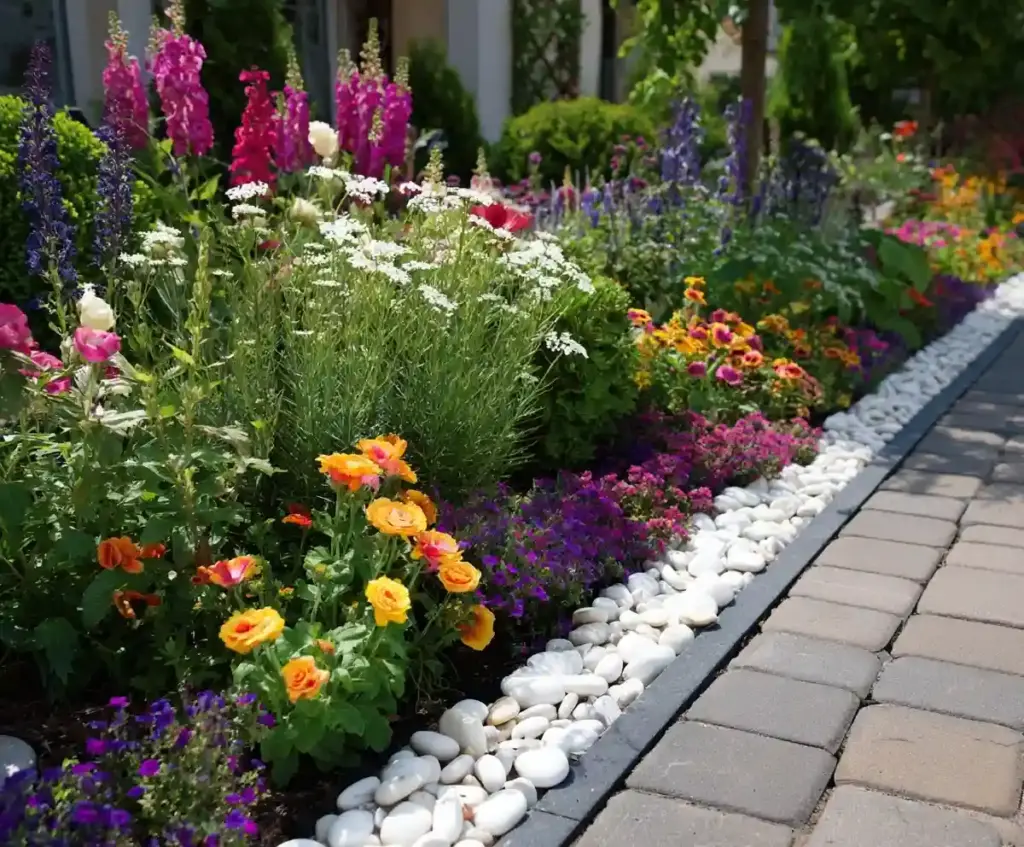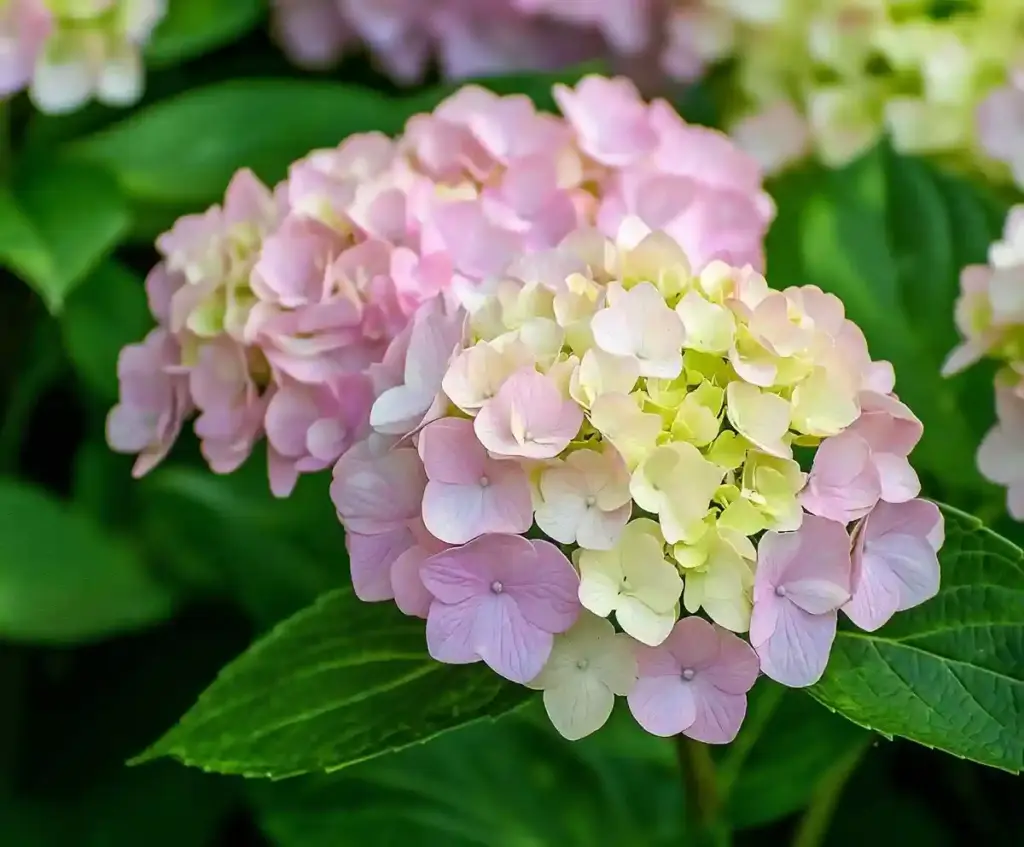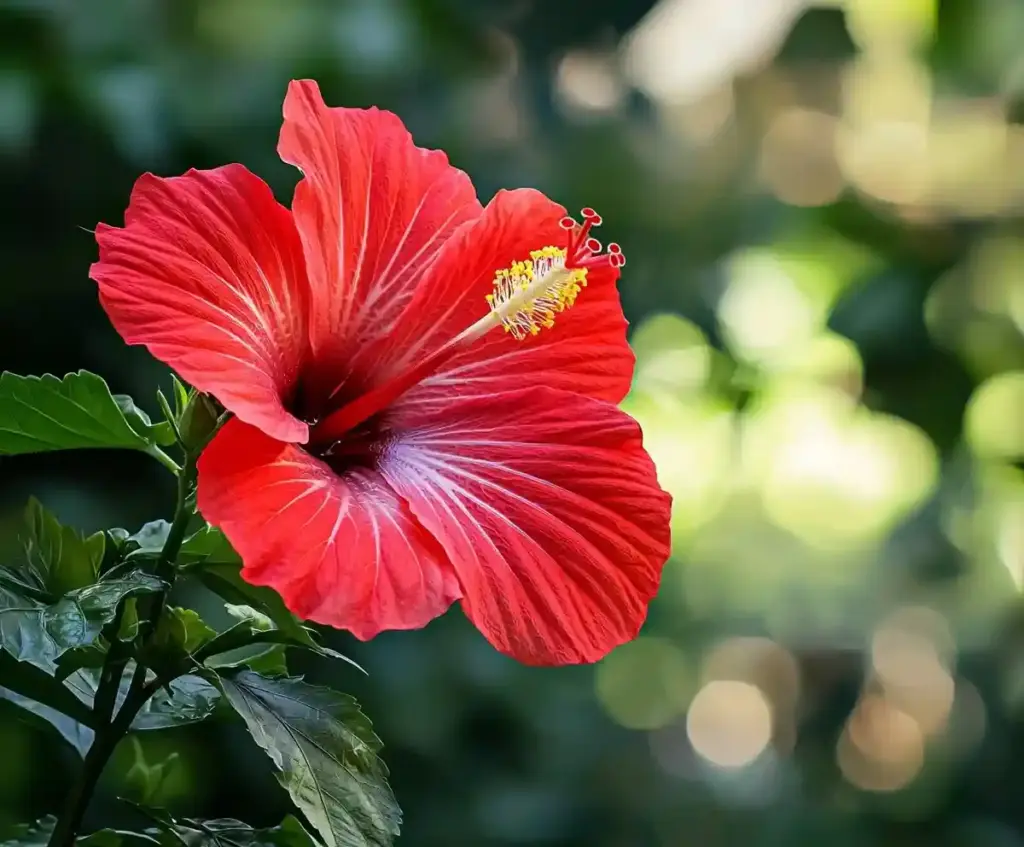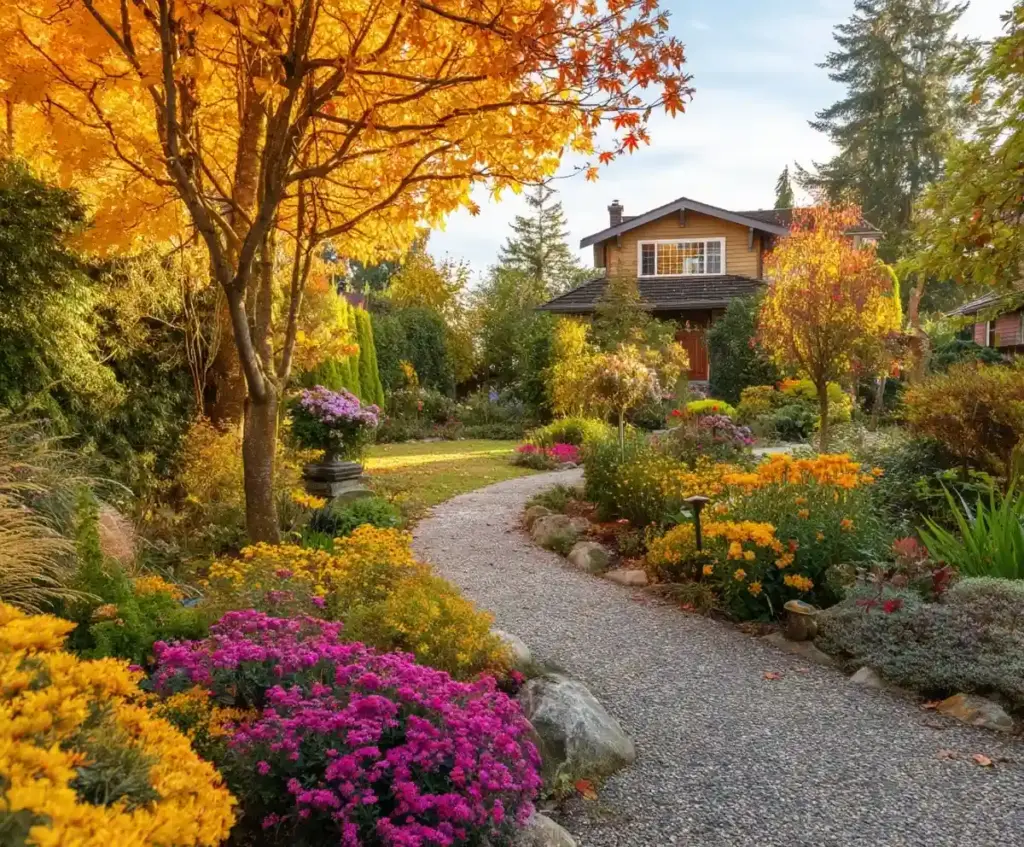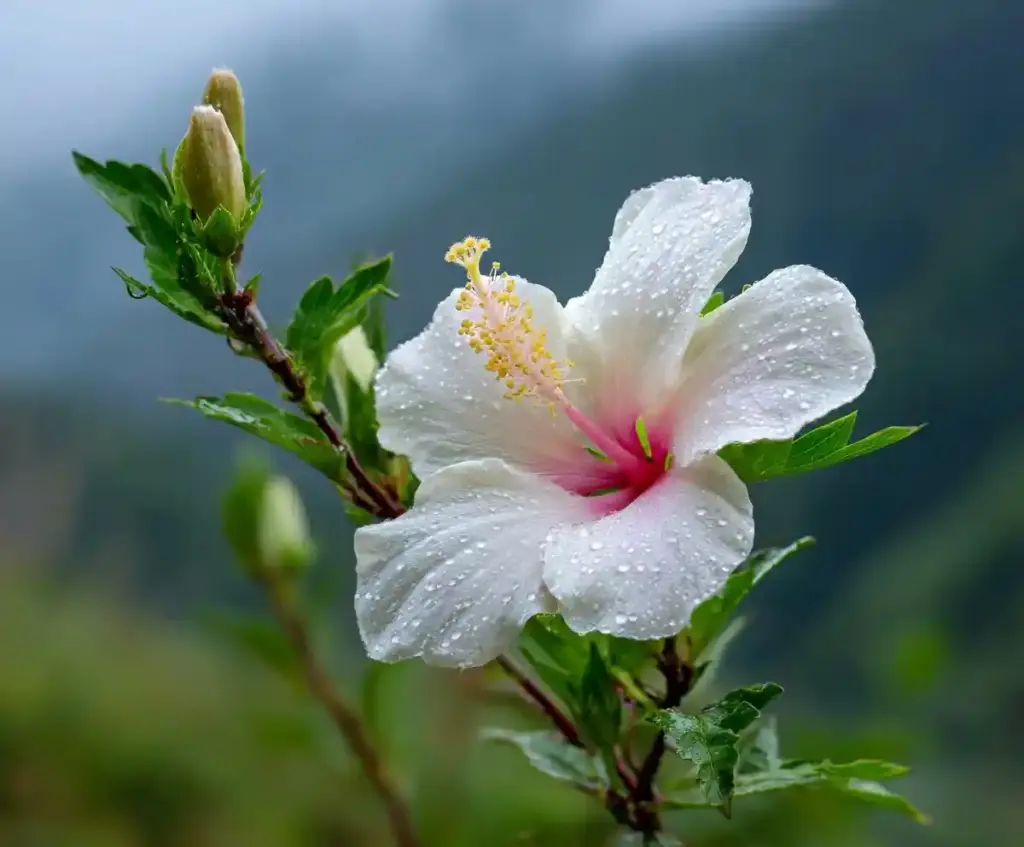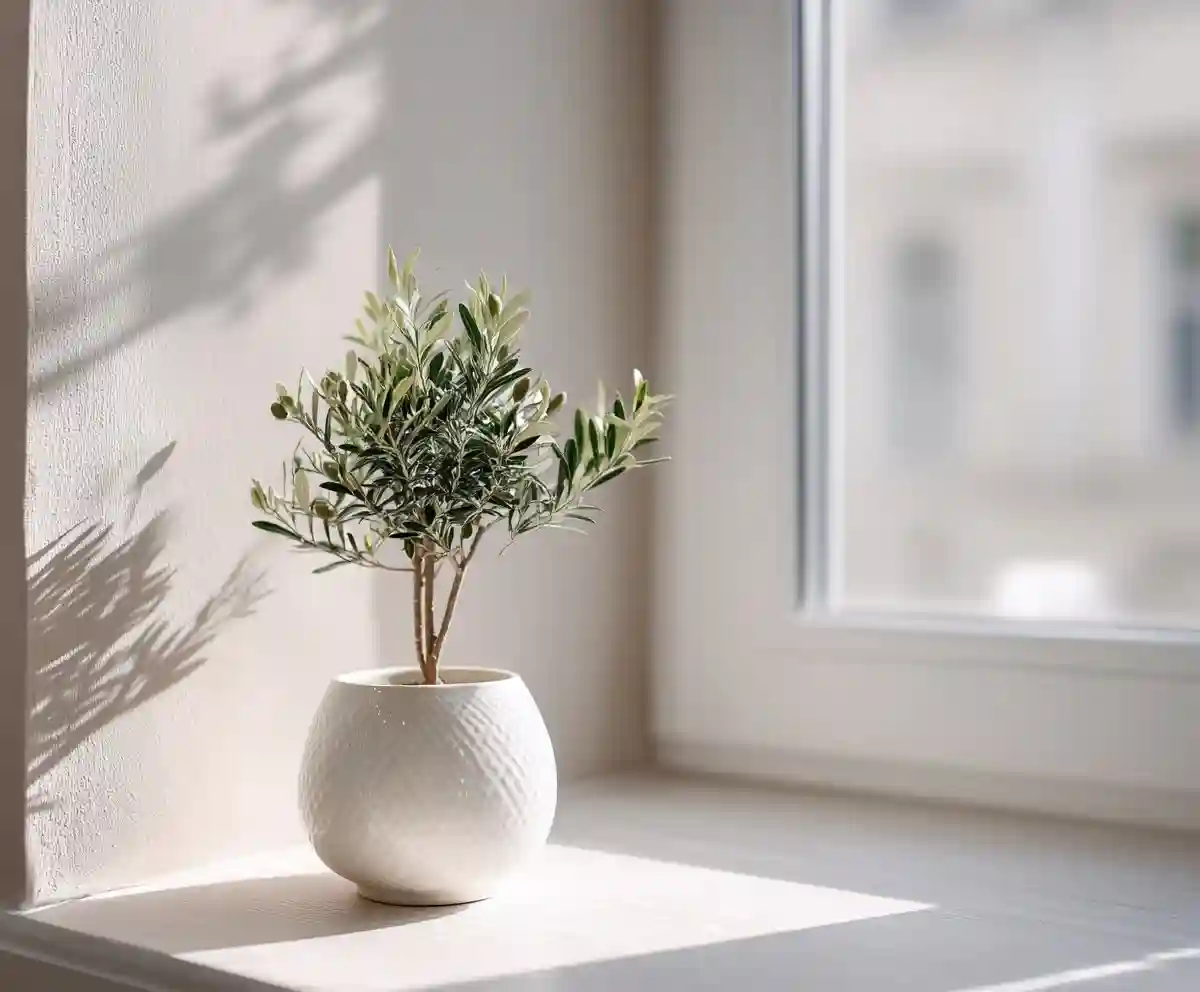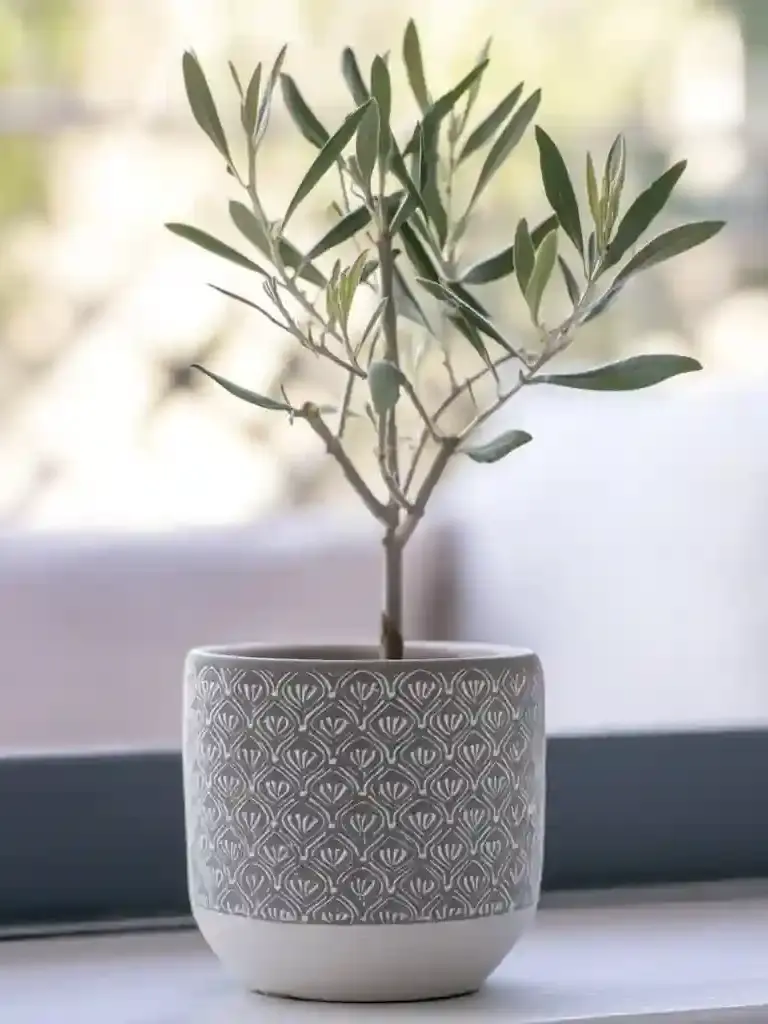Indoor olive tree care has become a trending topic among houseplant lovers—and for good reason. Olive trees, with their graceful, silvery-green leaves and Mediterranean charm, are surprisingly well-suited for indoor environments. Not only do they bring elegance and structure to interior spaces, but their ability to thrive in dry conditions makes them a low-maintenance option for home gardeners.
Unlike tropical plants that demand high humidity or constant misting, olive trees prefer the same warm, sun-soaked settings we enjoy. Their resilience, minimal water needs, and non-toxic nature make them ideal candidates for windowsills and sunny living rooms. With proper light, soil, and seasonal adjustments, an olive tree can live happily indoors for years—sometimes even rewarding you with tiny blossoms or fruit.
Table of Contents
Indoor Olive Tree Care at a Glance
Caring for an olive tree indoors is refreshingly straightforward, especially when you understand its native climate. Native to the Mediterranean, olive trees are adapted to hot, dry summers and cool, mild winters—conditions that can be mimicked indoors with the right setup. Here’s a quick overview of essential indoor olive tree care needs:
- Soil: Use a fast-draining, sandy mix—cactus soil is ideal. Avoid dense or moisture-retentive soils.
- Light: Needs at least 6 hours of direct sun daily; place near a bright, south-facing window.
- Water: Water thoroughly, but let the top 2 inches of soil dry before watering again. Cut back in winter.
- Fertilizer: Apply a balanced liquid fertilizer (16-16-16) at half strength every two weeks during spring and summer.
- Temperature: Maintain between 65°F and 80°F. Do not expose to temps below 40°F.
- Humidity: Prefers average indoor humidity (around 40%). Avoid misting.
- Safety: Non-toxic to cats and dogs, but whole olives or pits could present choking hazards.
- Pests to Watch For: Scale insects and spittlebugs; occasionally susceptible to fungal issues like olive scab.
This quick-care summary ensures your olive tree starts with the essentials—soil, sun, and seasonal awareness—setting the stage for healthy indoor growth.
Olive Tree Characteristics (History, Longevity, Growth Habit)
The olive tree, or Olea europaea, is more than just a decorative plant—it’s a living link to human history. Cultivated for over 6,000 years, olive trees are symbols of peace, longevity, and resilience. Their enduring nature makes them especially meaningful houseplants, as they often outlive generations when well cared for.
Indoors, olive trees maintain their classic elegance. They grow slowly, developing a graceful, airy structure with slender, gray-green leaves that shimmer in sunlight. While many varieties are compact enough for pots, some can eventually reach heights of 6–10 feet indoors. Their natural growth habit is upright but flexible, allowing light pruning to shape the plant to suit your space.
In the summer, mature trees may produce tiny, creamy-white flowers. If conditions are just right, these blossoms can develop into small olives—though indoor fruiting is rare without strong sunlight and outdoor acclimation.
One of the most fascinating features of olive trees is their ability to regenerate from the roots, even if the top is damaged by cold or stress. This hardiness, paired with their aesthetic appeal, makes them a rewarding choice for those committed to thoughtful indoor olive tree care.
Types of Olive Tree (Arbequina, Mission, Picholine, Manzanilla, Amfissa, etc.)
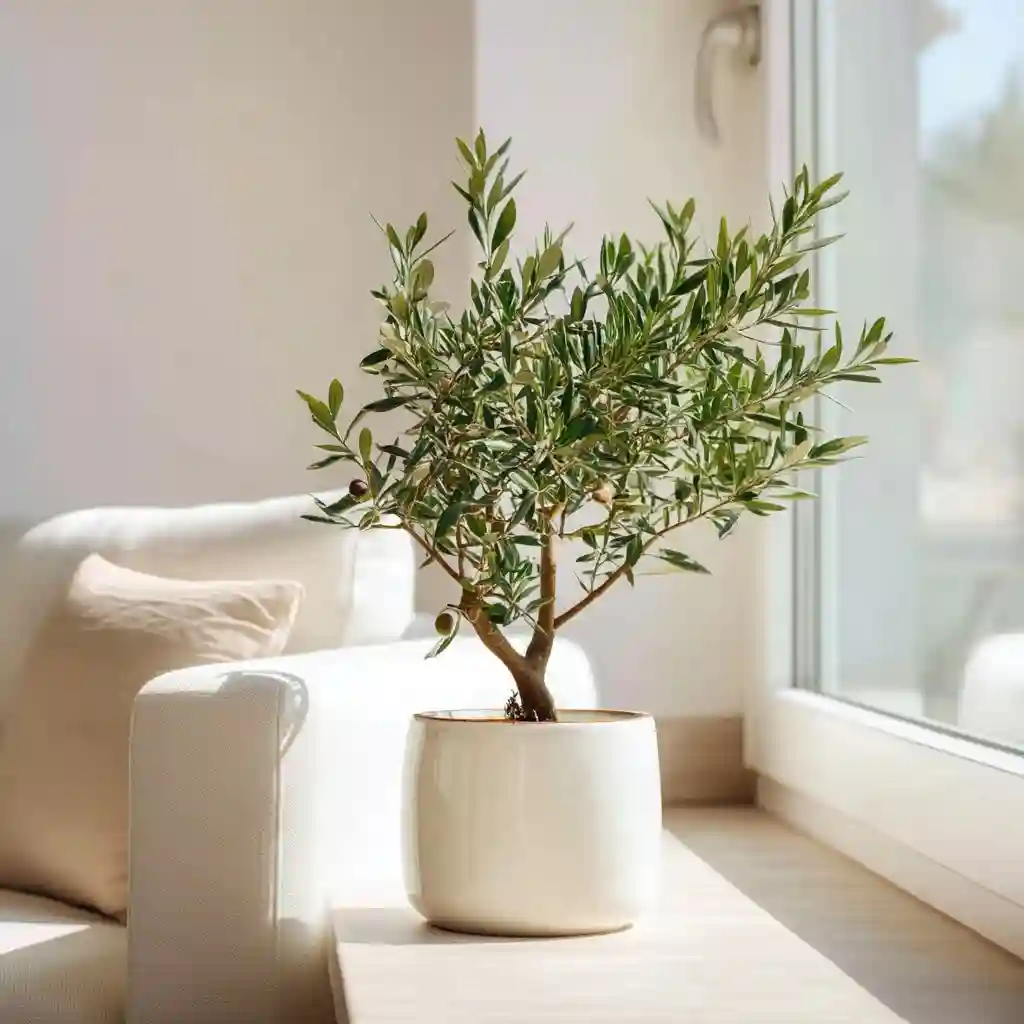
When it comes to indoor olive tree care, choosing the right variety is key. Not all olive trees are suited for life in a pot, but several cultivars adapt beautifully to indoor conditions. Whether you’re growing for ornamental purposes or dreaming of homegrown olives, here are some popular indoor-friendly types:
Arbequina
- Best for: Indoor growing
- Traits: Compact, self-pollinating, and highly adaptable
- Fruit: Small, mild-flavored brown olives
Arbequina trees stay small in containers and tolerate lower light better than most, making them a favorite for indoor gardeners.
Mission
- Best for: Cold tolerance
- Traits: Developed in California by Franciscan missionaries
- Fruit: Mild green or black olives, used for oil and brining
Mission olives are resilient and perform well in slightly cooler conditions, perfect for homes with seasonal temperature fluctuations.
Picholine
- Best for: Cooking and snacking
- Traits: French origin, spicy flavor profile
- Fruit: Green olives with nutty flavor
Prune regularly to manage its size indoors. It’s a stylish, versatile variety for both display and culinary use.
Manzanilla
- Best for: Classic Mediterranean look
- Traits: Slow-growing, graceful, traditional
- Fruit: Popular snacking olive with a rich flavor
This Spanish variety is aesthetically appealing, with delicate branches and bright green fruit. It’s best in draft-free, warm environments.
Amfissa
- Best for: Outdoor containers
- Traits: Vigorous growth, wide-spreading
- Fruit: Deep purple olives used in Greek cuisine
While beautiful, Amfissa trees aren’t ideal indoors due to their rapid, sprawling habit—better suited for patio pots or greenhouses.
When selecting an olive tree for indoors, prioritize compact growth, manageable size, and tolerance to indoor light. Arbequina and Mission are excellent beginner choices for low-fuss indoor olive tree care.
Selecting Soil for Indoor Olive Trees
Soil choice plays a major role in successful indoor olive tree care. These trees hail from dry, rocky regions and are highly sensitive to overwatering. That’s why it’s essential to use a fast-draining, gritty mix that mimics their natural environment.
Ideal Soil Mix
- Type: Sandy or cactus mix
- Drainage Boosters: Perlite, coarse sand, bark chips, or small gravel
- pH Range: Slightly acidic to mildly alkaline (5.5 to 8.5)
A good-quality cactus or succulent potting mix works well right out of the bag. To enhance drainage, consider adding 25–30% perlite or fine gravel to the mix. Avoid peat-heavy soils or composts, which retain too much moisture and can suffocate the roots.
Pot Selection Matters
Always choose a container with a drainage hole at the bottom. Without it, excess water can collect and lead to root rot—a common issue in olive trees kept indoors.
Skip mulch and compost on the surface of the soil. While these amendments benefit some plants, they hold moisture longer than olive trees prefer, which goes against their dry-soil needs.
By giving your tree a loose, well-aerated home, you’re setting the stage for healthy roots and long-term vitality—key ingredients in proper indoor olive tree care.
The Right Light
Light is arguably the most important factor in successful indoor olive tree care. These sun-loving trees evolved in the Mediterranean, soaking up full, intense light day after day. To thrive indoors, they need similar conditions.
Sunlight Requirements
- Minimum: 6 hours of direct sunlight daily
- Best location: South-facing window with unobstructed exposure
- Avoid: East or north-facing windows with weak or filtered light
Make sure the foliage doesn’t touch the glass—leaves can burn from direct contact, especially in intense afternoon sun.
Supplementing with Grow Lights
If your home doesn’t get consistent sunlight, especially in winter, you can use full-spectrum grow lights. Choose LED fixtures that simulate daylight and position them close to the plant—about 6 to 12 inches above the top foliage—for 10 to 12 hours per day.
Summer Outdoor Transition
Your tree will appreciate a summer vacation outdoors, where it can bask in natural sunlight. But don’t move it outside all at once—gradually acclimate the plant over 1 to 2 weeks by increasing sun exposure each day. This helps avoid leaf scorch from sudden intensity.
Regular access to ample light boosts the tree’s overall health, encourages compact growth, and even increases the chances of flower or fruit production. When it comes to indoor olive tree care, bright light is non-negotiable.
Watering Olive Trees
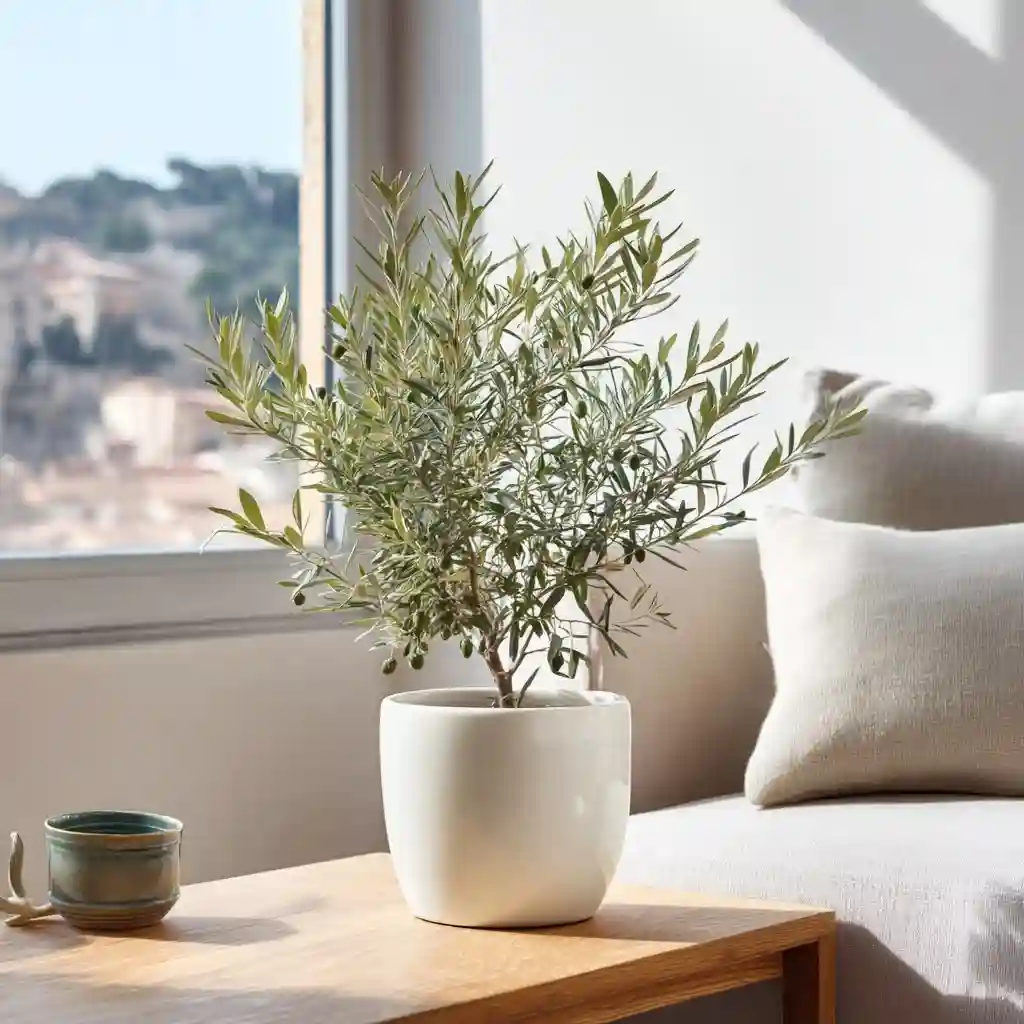
When it comes to indoor olive tree care, watering is one of the most commonly misunderstood aspects. While olive trees are drought-tolerant, they do need consistent moisture—just not too much of it.
How to Water Properly
- Water deeply until excess drains out the bottom
- Let the top 2 inches of soil dry out completely between waterings
- Check soil with your finger—don’t rely on a schedule
During the active growing season (spring through early fall), your olive tree may need watering every 7–10 days, depending on your indoor conditions. But always check the soil before watering again.
Reduce Water in Winter
As the tree enters dormancy in late fall and winter, reduce watering significantly. Let the soil dry even more deeply before each watering session. Overwatering during winter is a common cause of root rot in olive trees.
Pot and Drainage Are Crucial
A well-draining soil mix isn’t enough—your pot must have a drainage hole to prevent standing water. If your olive tree sits in soggy soil, even once, it can suffer irreversible root damage.
By following a “soak and dry” routine and adjusting seasonally, you’ll prevent stress and fungal issues, helping your olive tree grow strong and healthy indoors.
Fertilizing Olive Trees
A well-fed tree is a happy tree—especially when grown in a container. Indoor olive trees need extra nutrients to stay healthy and support new growth, and the right fertilizer can make all the difference in long-term indoor olive tree care.
Best Fertilizer Formula
- Type: Balanced liquid fertilizer
- Ratio: 16-16-16 (nitrogen-phosphorus-potassium)
- Strength: Dilute to half strength for each application
This balance supports healthy leaves, strong roots, and—if conditions are right—flower and fruit development.
When and How Often to Fertilize
- Spring through Summer: Every 2 weeks with diluted liquid fertilizer
- Fall through Winter: Once a month or none at all, depending on the plant’s growth rate
Many experts recommend pausing feeding between August and March, especially if the tree goes fully dormant. However, if your olive tree still produces light new growth during winter (often the case in warmer or well-lit homes), you can apply a nitrogen-based fertilizer monthly—always at reduced strength.
Skip Compost and Mulch Indoors
Organic matter like compost or mulch tends to hold excess moisture—something olive trees actively dislike. Stick to fertilizers formulated for indoor plants to ensure clean, targeted nutrition.
Consistent, moderate feeding during the growing season keeps your olive tree vibrant and prevents nutrient deficiencies, especially nitrogen—something olives commonly lack when grown indoors.
Setting the Temperature and Humidity
To thrive indoors, olive trees need conditions that mimic their native Mediterranean climate. While they’re relatively tolerant of indoor environments, paying close attention to temperature and humidity helps prevent stress and leaf drop—two common concerns in indoor olive tree care.
Ideal Indoor Temperature Range
- Preferred: 65°F to 80°F (18°C to 27°C)
- Minimum safe temp: 40°F (4°C)
- Fatal threshold: Below 15°F (–9°C)
In warm, sunny rooms, olive trees tend to flourish. They can even handle brief heat spikes, especially if given enough light and airflow. But once nighttime temps drop near 40°F, it’s time to bring outdoor trees back inside.
If you live in USDA Zone 11 or warmer, your tree may be able to stay outside year-round. In Zones 8–10, some success is possible with proper winter protection, like fleece wraps and mulching.
Humidity Needs
- Ideal: Around 40% (average indoor humidity)
- Too much: Avoid high humidity or regular misting
- Too little: Not usually a problem—olive trees prefer dry air
Unlike tropical houseplants, olive trees don’t crave high humidity. In fact, misting can increase the risk of fungal problems. If your home is especially dry in winter, focus on temperature and lighting first—olive trees adapt better to dryness than dampness.
By maintaining steady warmth and avoiding drastic shifts in temperature or moisture, you’ll create a stable environment your olive tree can call home.
ChatGPT said:
Safety Considerations
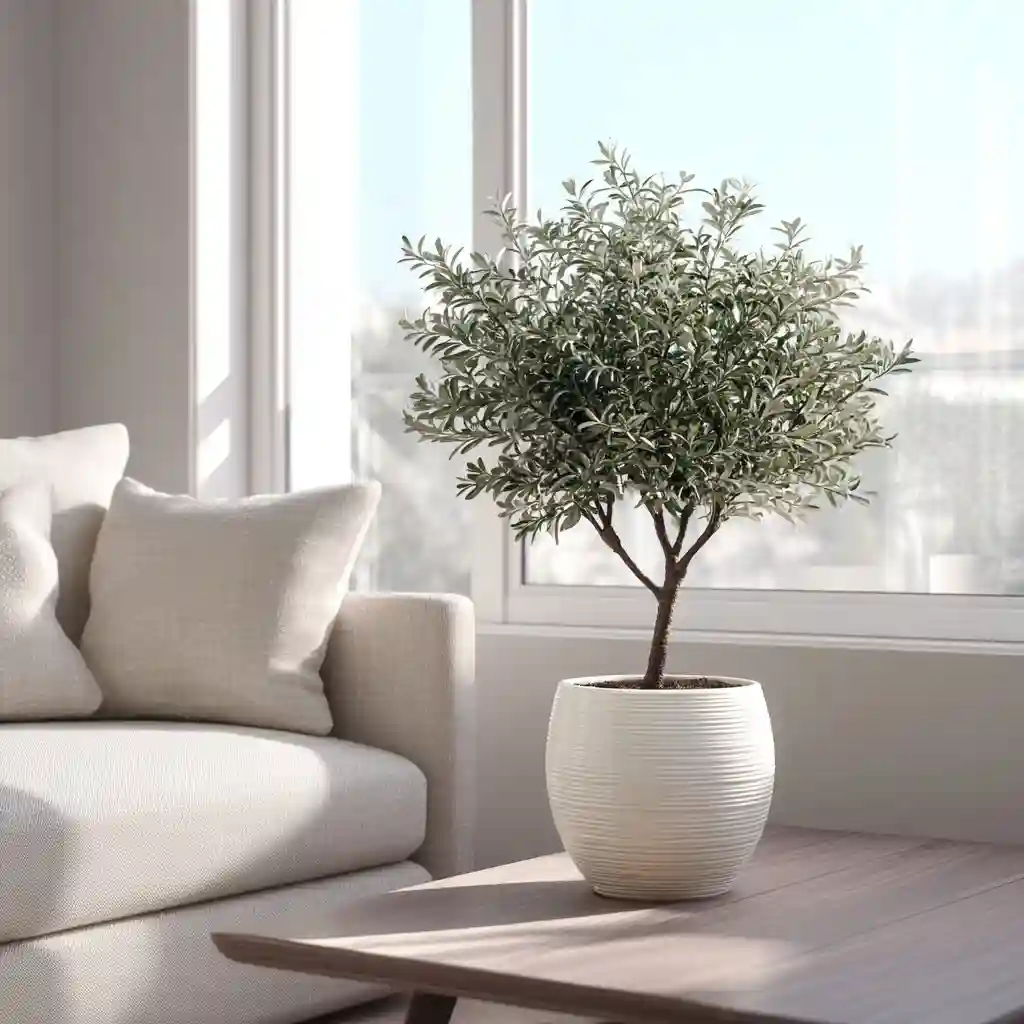
One of the lesser-known perks of indoor olive tree care is that olive trees are considered safe for homes with pets. Whether you have curious cats or playful dogs, olive trees are generally a worry-free addition to your indoor plant collection.
Pet Safety
- Non-toxic: Leaves, bark, and fruit are safe for dogs and cats
- ASPCA status: Not listed as toxic
- No known poisons: Olive trees don’t produce harmful compounds for animals
That said, while the tree itself is non-toxic, there are still a couple of things to watch for:
Choking Hazards
- Olive pits can pose a choking risk if dropped fruit is consumed
- Hard texture: Pits may damage teeth if bitten into by dogs
- Solution: Remove fallen olives promptly and keep the tree trimmed to reduce dropped fruit indoors
Mild Digestive Upset
If a pet consumes large amounts of leaves or olives, they may experience mild symptoms like stomach upset or loose stools—mainly from the natural salt content in cured olives or excessive fiber.
Overall, olive trees are one of the safer choices for indoor gardeners with pets. With a few simple precautions, you can enjoy the beauty of your tree without compromising household safety.
Potential Pests and Diseases
While generally hardy, olive trees aren’t completely immune to pests or disease—especially when grown indoors, where air circulation may be limited. Fortunately, with regular monitoring and proper indoor olive tree care, most issues can be spotted early and handled without harsh chemicals.
Common Indoor Pests
Scale Insects
- What to look for: Small, dome-shaped bumps on stems or leaves
- Damage: Feed on sap, weakening the plant over time
- Control: Wipe with rubbing alcohol or treat with insecticidal soap
Scale can spread quickly if left unchecked, so inspect the plant weekly—especially along stems and leaf undersides.
Spittlebugs
- What to look for: Frothy “spit”-like blobs on stems
- Damage: Feed on sap and can transmit harmful bacteria
- Control: Remove manually or spray with water; follow up with insecticidal soap if needed
Though less common indoors, spittlebugs are a serious threat due to the bacteria (Xylella fastidiosa) they carry, which can cause severe decline or death in olive trees.
Fungal Disease
Olive Scab
- Symptoms: Yellow or brown spots on leaves, premature leaf drop
- Cause: High humidity and poor air circulation
- Treatment: Prune affected areas and increase airflow; avoid misting
Fungus thrives in overly moist environments. Since olive trees prefer dry air, proper watering and spacing are your best defenses.
Prevention Tips
- Use a well-draining soil mix and avoid overwatering
- Ensure good airflow around the plant—no crowding near other plants or walls
- Quarantine any new houseplants before placing them nearby
With a little vigilance, you can prevent most pest or disease issues and keep your olive tree growing strong and stress-free.
Conclusion
Indoor olive tree care doesn’t have to be complicated. With the right mix of sunlight, dry soil, and seasonal awareness, olive trees can become long-lived and rewarding houseplants. Their graceful form and silvery leaves bring a natural elegance to any room, and their minimal care requirements make them ideal for both seasoned plant lovers and beginners.
Choose a compact variety, place it where it gets plenty of light, water thoughtfully, and resist the urge to over-care. With just a bit of attention each season, your olive tree can thrive indoors for years—perhaps even producing flowers or fruit with time and patience.
🌿 Love gardening inspiration? Follow me on Pinterest for bold plant ideas, tips, and seasonal color!
More Posts
